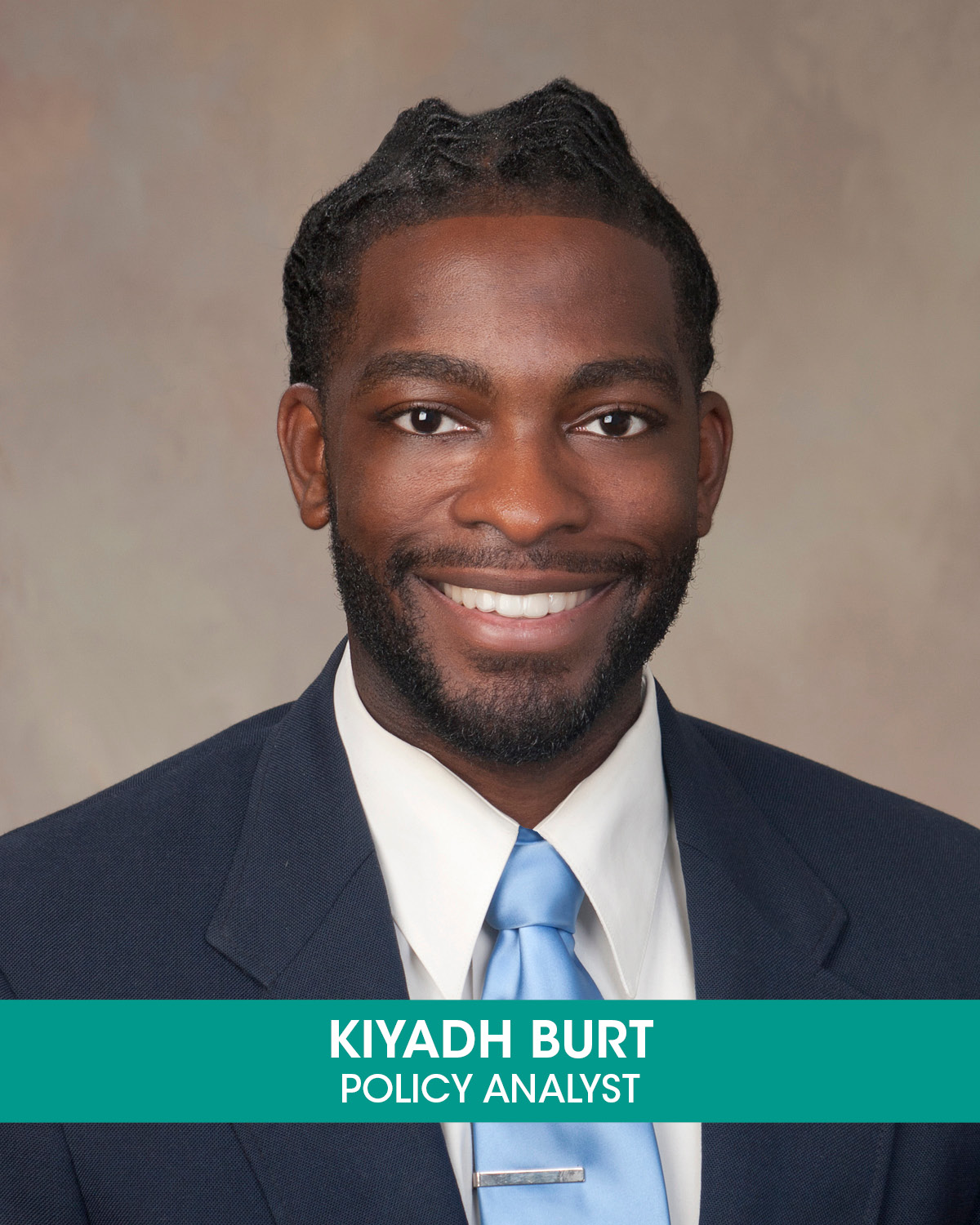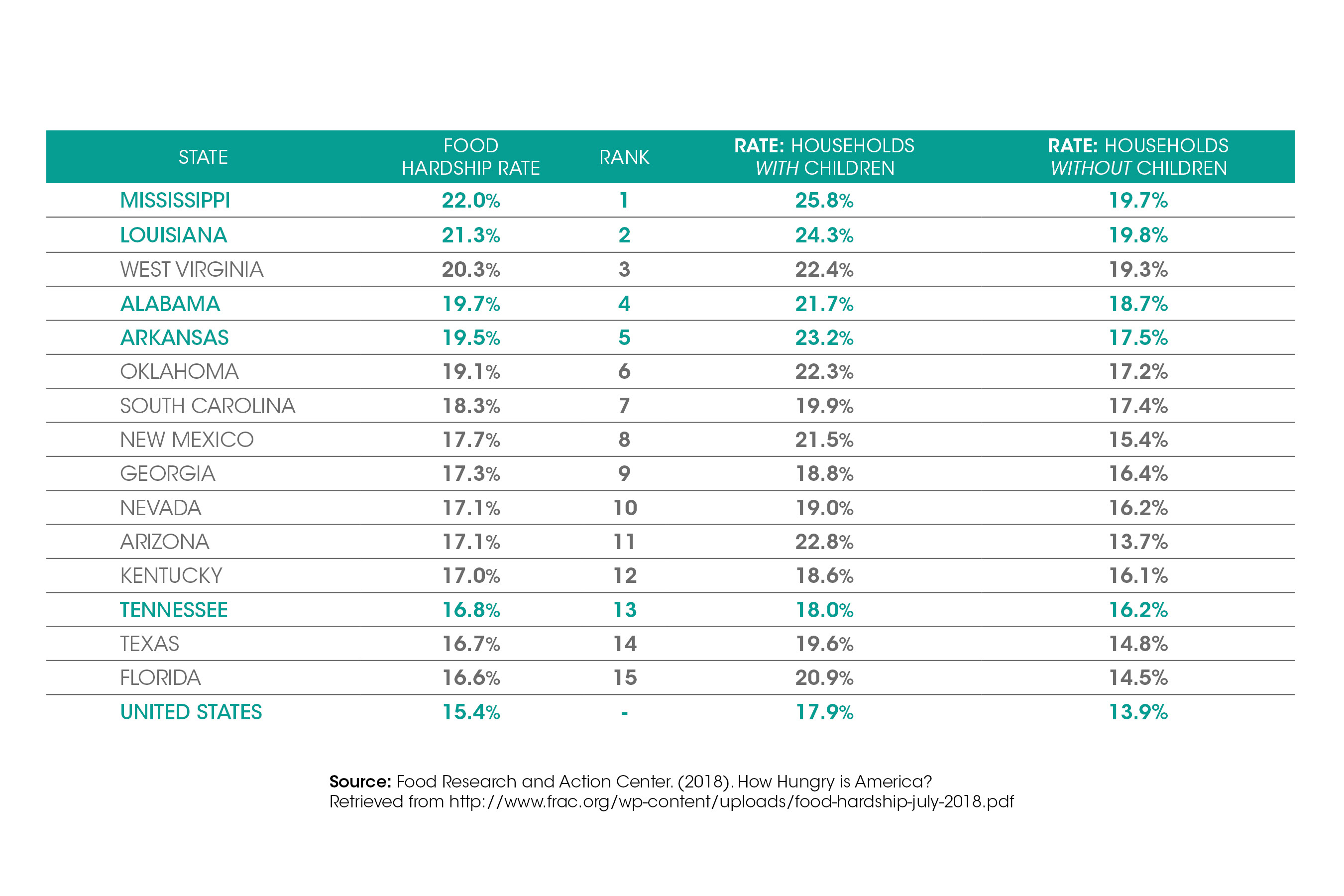20 Percent of Households in the Deep South Struggle to Afford Enough Food
September 18th, 2018
Despite an improving economy, 20 percent of households in the Deep South reported that they struggled to buy enough food for themselves and their families during 2016–2017, according to a new report released by the Food Research & Action Center (FRAC, a national anti-hunger advocacy group).
How Hungry is America? provides data on food hardship — the inability to afford enough food— nationally, for every state, the District of Columbia, and 108 Metropolitan Statistical Areas (MSAs) across the country. The report is based on 337,690 interviews in 2016–2017.
Nationally, the report found that after several years of decline, the food hardship rate for all households increased from 15.1 percent in 2016 to 15.7 percent in 2017. The food hardship rate for households with children is 1.3 times higher than for households without children.
The report finds:
- Mississippi has the worst food hardship rate in the nation, with 22 percent of households reporting they have trouble putting food on the table.
- States in the Deep South rank among the top 15 in the country for highest rates of food hardship. See Table for comparison.
- The food hardship rate in the Deep South is considerably higher in households with children, 22 percent, as compared to households without children, 18 percent.
Click to enlarge
Throughout the Deep South, HOPE is working to alleviate food insecurity for rural households. The Mid South Healthy Food Initiative was designed to increase the number of grocery stores in underserved communities. Through this program, HOPE has financed 11 healthy food projects, like Up in Farms, and directly invested or leveraged more than $60 million for food access in economically distressed areas across the Deep South. Now, more households in the Deep South have access to affordable, healthy foods. Strengthening investments in efforts like the MSHFI program can build the number of families who have the opportunity to access quality foods, regardless of the community in which they live.
About the Report
How Hungry is America? focuses on data for the nation for 2017 and for every state and the District of Columbia, and 108 MSAs for 2016–2017. The data were gathered as part of the Gallup-Sharecare Well-Being Index project, which has been interviewing hundreds of households daily since January 2008. The Food Research & Action Center (FRAC) analyzed responses to the question: “Have there been times in the past 12 months when you did not have enough money to buy food that you or your family needed?” A “yes” answer to this question is considered to signal that the household experienced food hardship. FRAC uses the phrase “food hardship” to avoid confusion with the annual Census Bureau/U.S. Department of Agriculture survey and analysis that produces “food insecurity” numbers, but the concepts are comparable.







